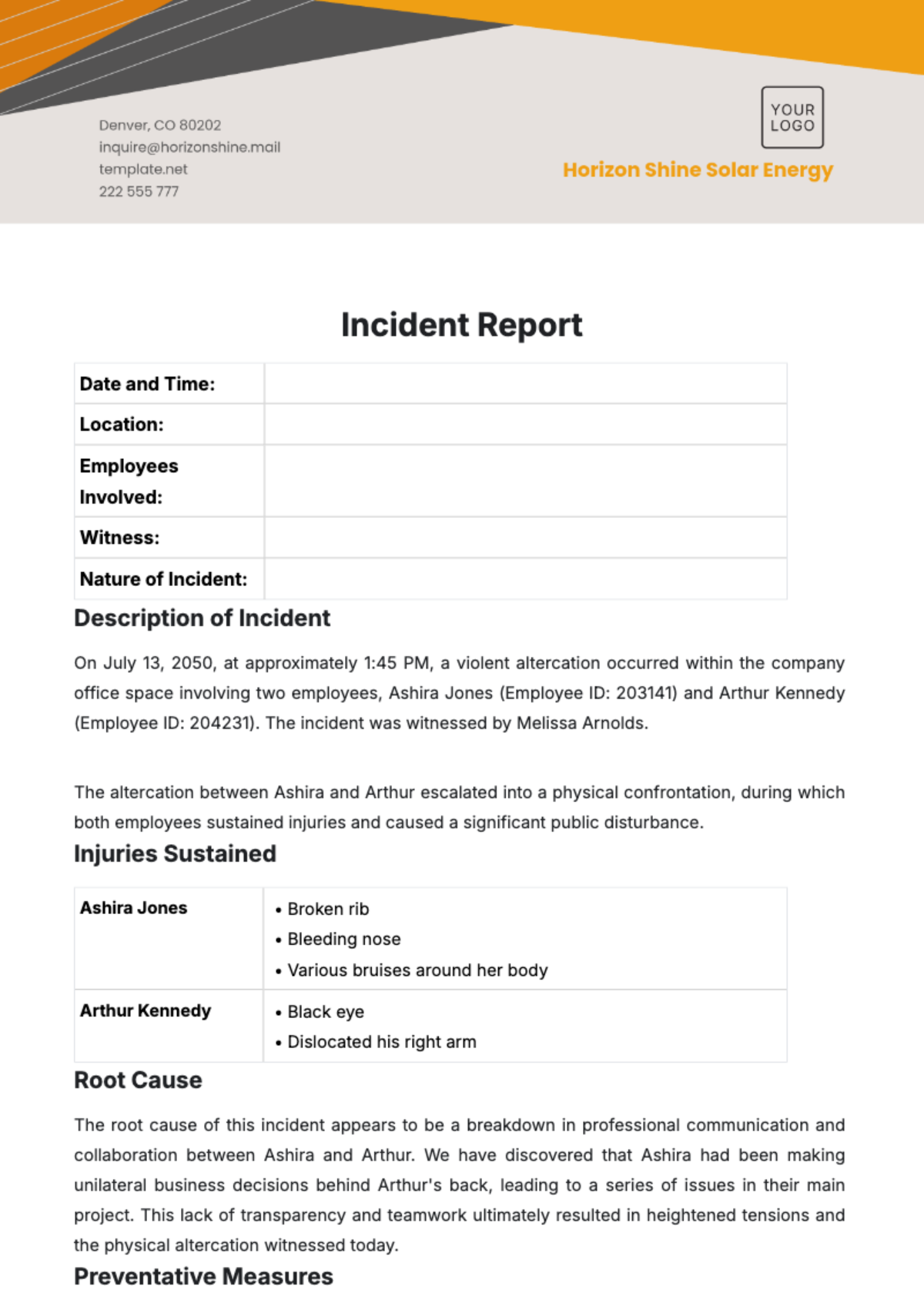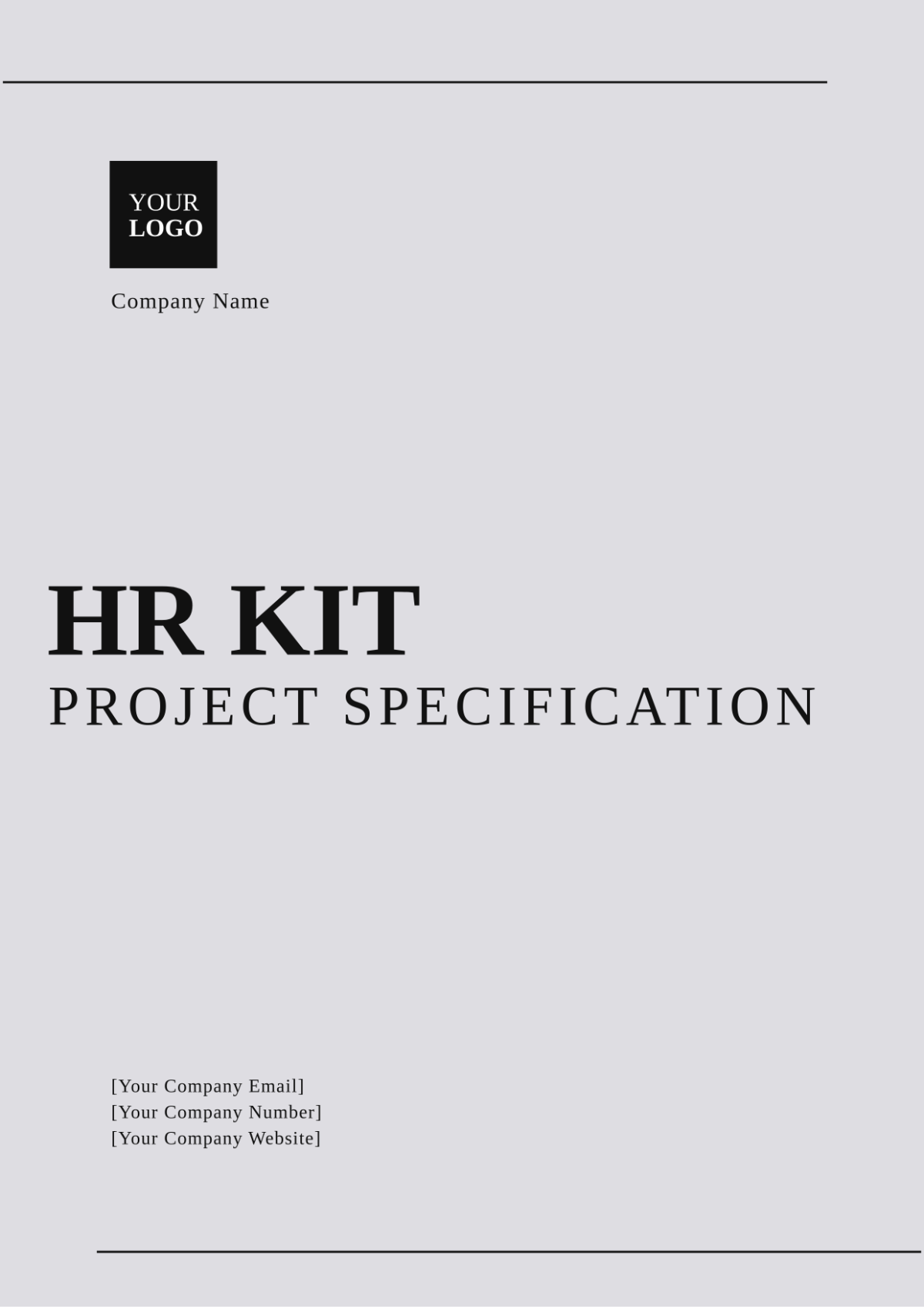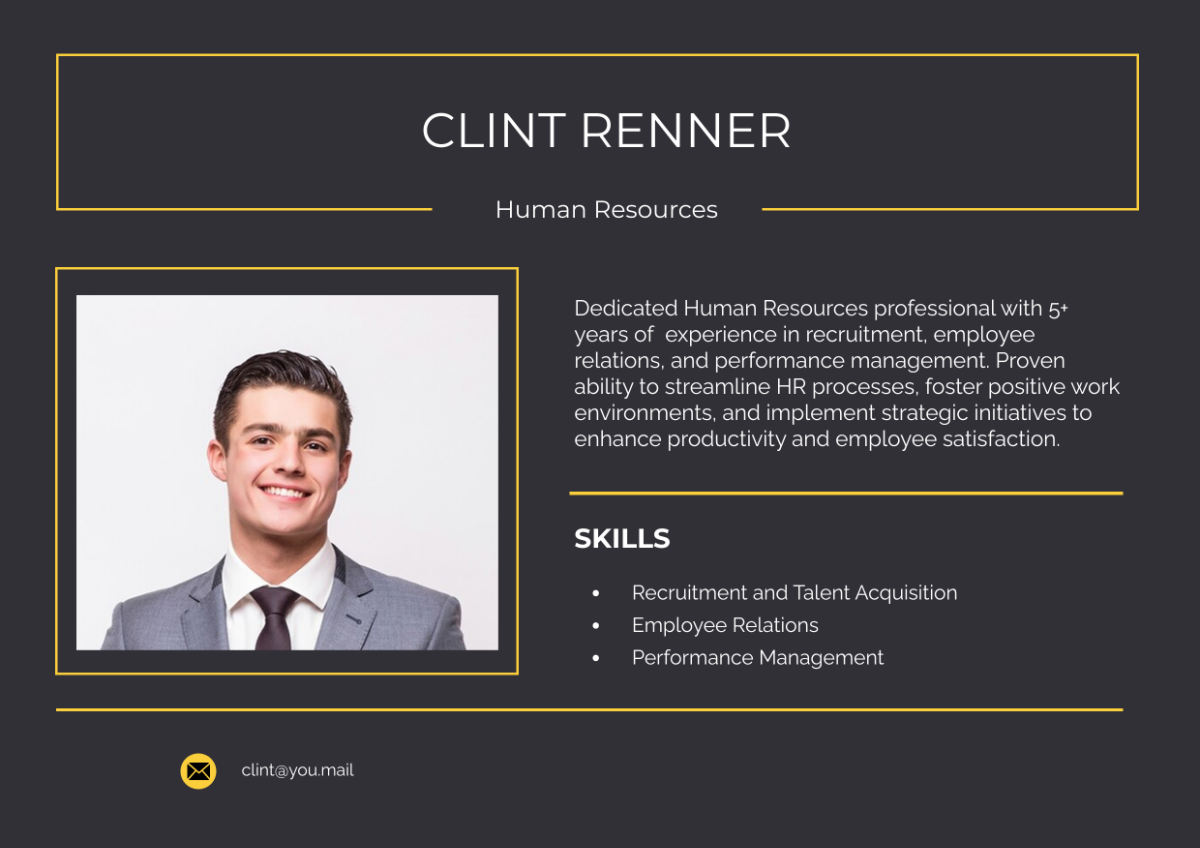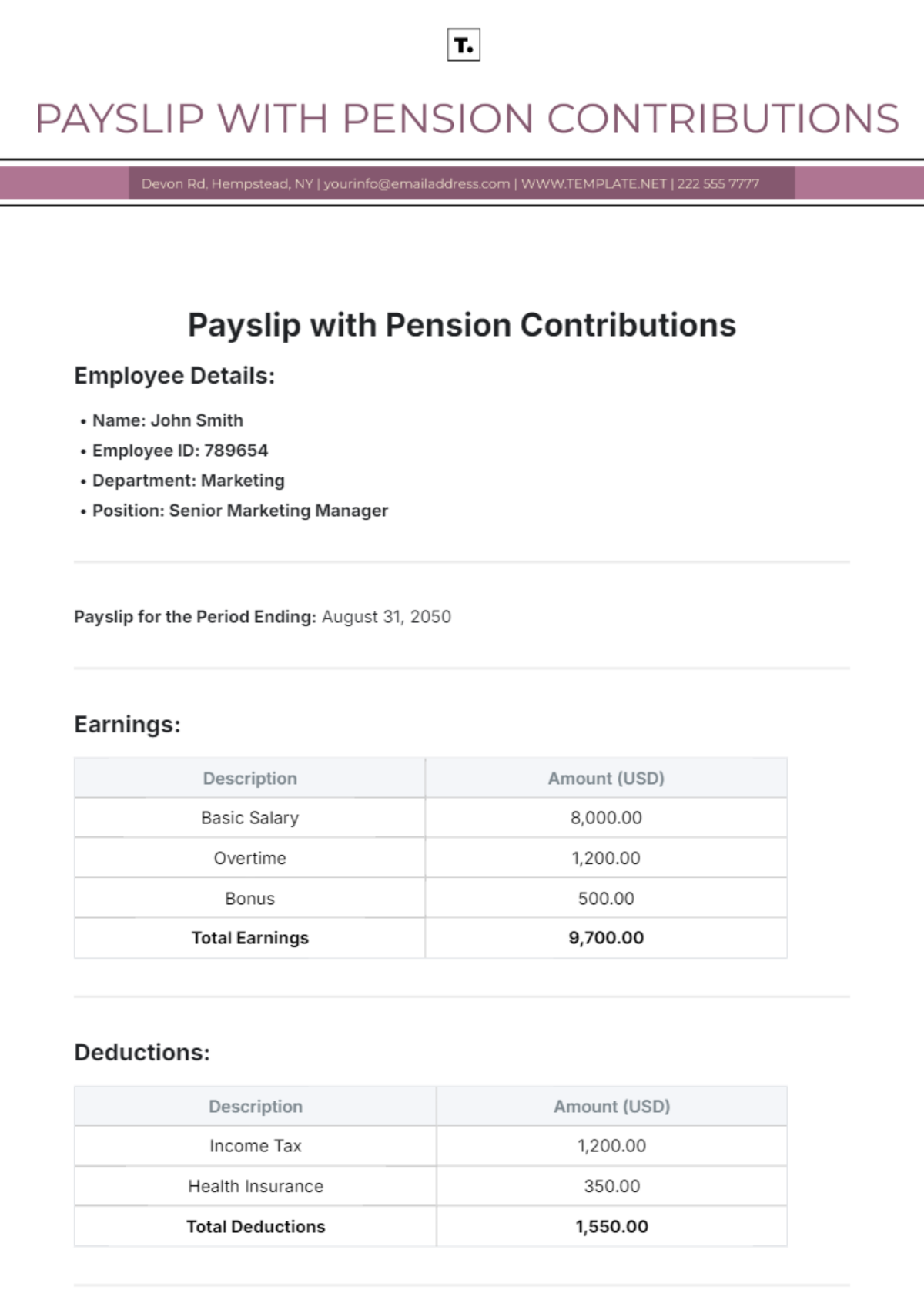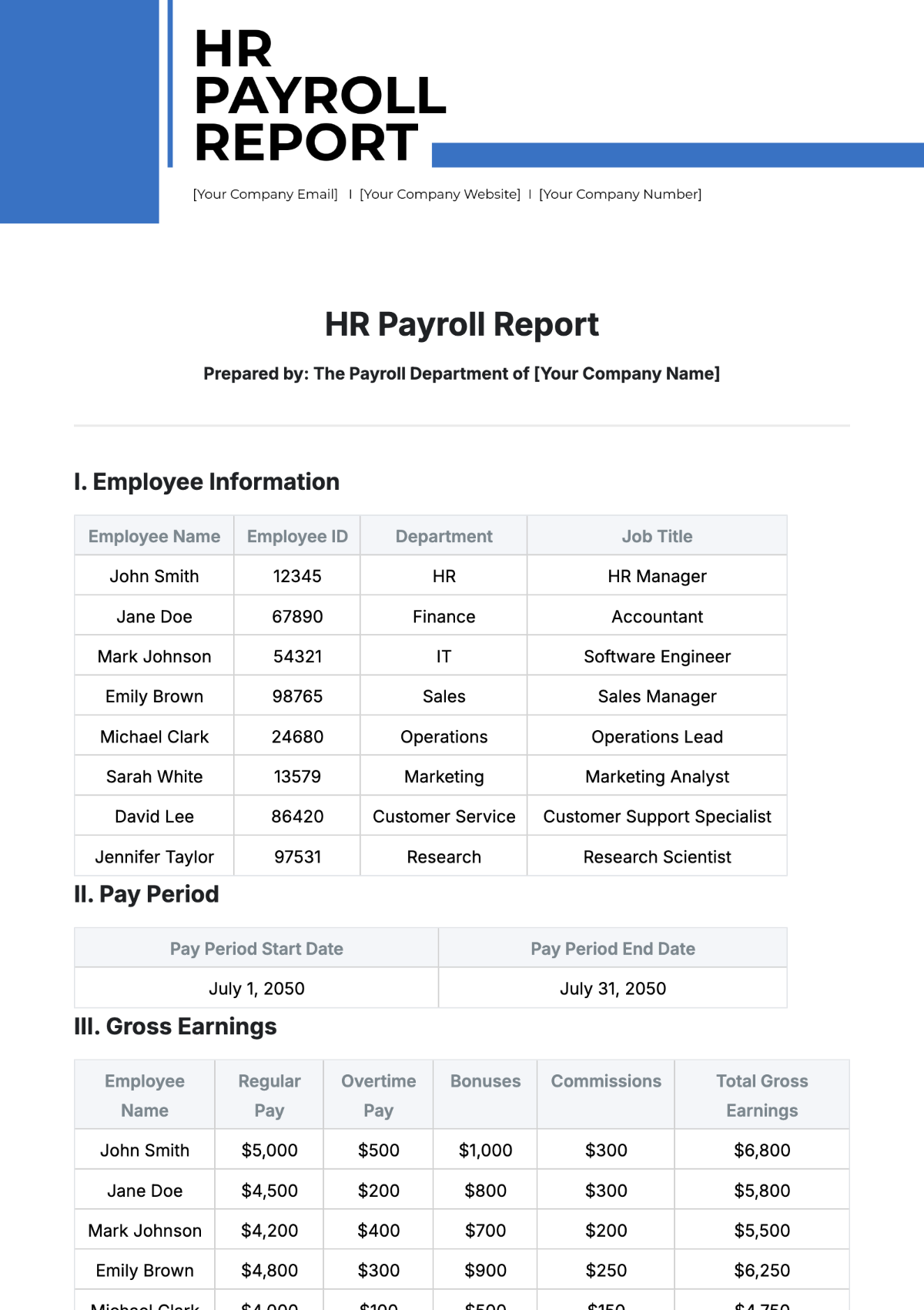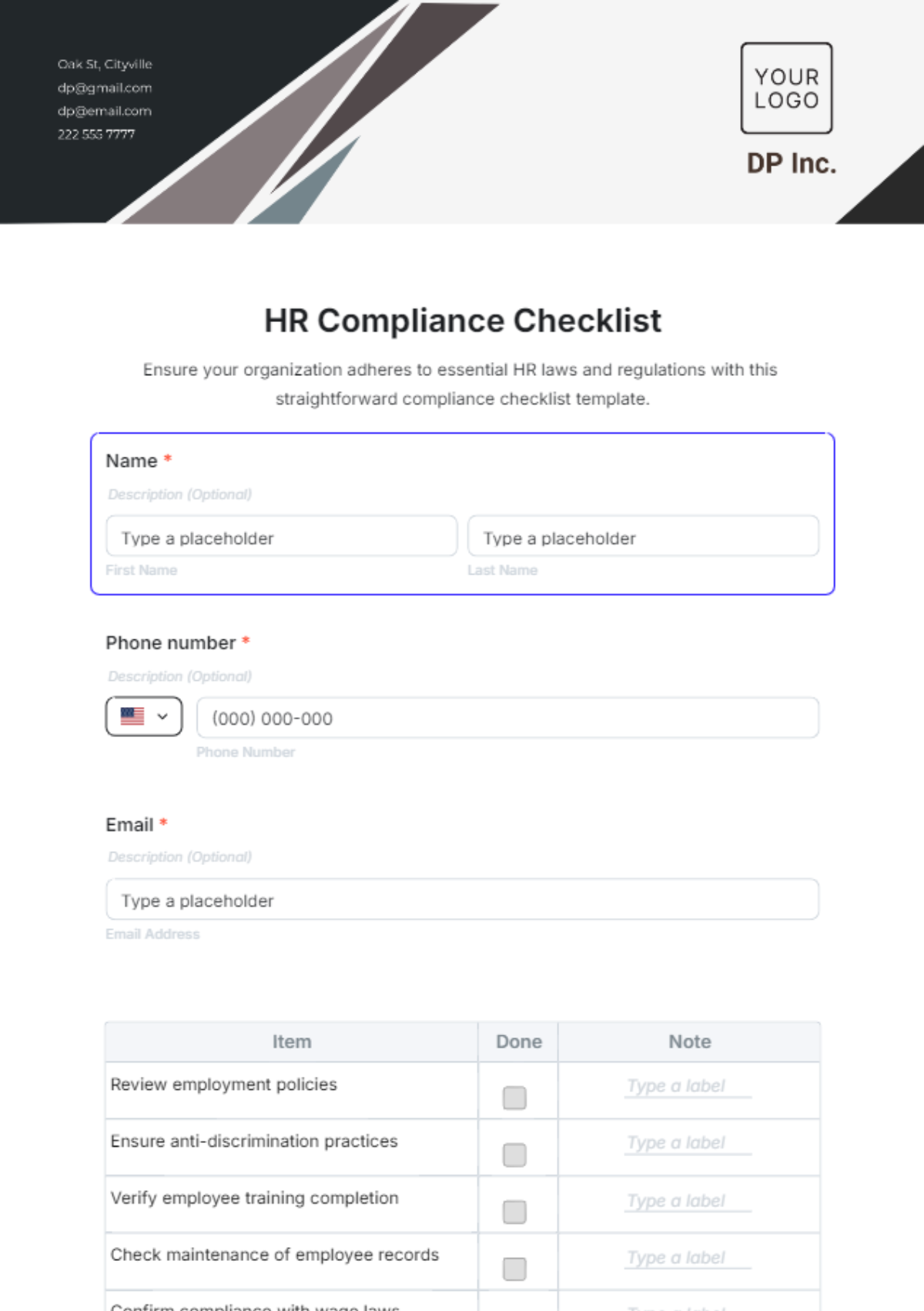Fair Hiring Practices and Legal Implications Guide
TABLE OF CONTENTS
Section 1: Introduction....................................................................................................3
Section 2: Equal Opportunity Employment...................................................................3
2.1 Non-Discrimination:..................................................................................................3
2.2 Reasonable Accommodation:.................................................................................3
2.3 Affirmative Action:....................................................................................................3
2.4 Implicit Bias Training:...............................................................................................3
Section 3: Job Posting and Advertising.......................................................................3
3.1 Inclusive Language:..................................................................................................3
3.2 Accessibility:.............................................................................................................3
3.3 Internship Opportunities:.........................................................................................3
3.4 Internship Outreach:................................................................................................4
Section 4: Application and Screening Process............................................................4
4.1 Uniform Screening Criteria:......................................................................................4
4.2 Background Checks:................................................................................................4
4.3 Criminal Record Guidance:......................................................................................4
4.4 Disclosure of Compensation:..................................................................................4
Section 5: Interviews and Assessments.......................................................................4
5.1 Structured Interviews:..............................................................................................4
5.2 Skills Testing:............................................................................................................4
5.3 Diversity Interview Panels:......................................................................................4
5.4 Candidate Feedback:...............................................................................................4
Section 6: Selection and Offers.....................................................................................5
6.1 Merit-Based Selection:.............................................................................................5
6.2 Offer Letters:.............................................................................................................5
6.3 Salary Transparency:................................................................................................5
6.4 Counteroffers:...........................................................................................................5
Section 7: Records and Documentation.......................................................................5
7.1 Record Keeping:.........................................................................................................5
7.2 Confidentiality: .........................................................................................................5
7.3 Document Retention:................................................................................................5
7.4 Data Security:............................................................................................................5
Section 8: Reporting and Accountability......................................................................6
8.1 Internal Reporting:....................................................................................................6
8.2 External Reporting:..................................................................................................6
8.3 Audits and Reviews:................................................................................................6
8.4 Metrics and Reporting:............................................................................................6
Section 9: Training and Education................................................................................6
9.1 Training Programs:....................................................................................................6
9.2 Awareness Campaigns:............................................................................................6
9.3 Legal Updates:..........................................................................................................6
9.4 Mentoring Programs:................................................................................................6
Section 10: Legal Consequences and Remedies.........................................................6
10.1 Legal Penalties:........................................................................................................6
10.2 Remedies:................................................................................................................7
10.3 Legal Counsel:.........................................................................................................7
10.4 Continuous Compliance Monitoring:.....................................................................7
Section 1: Introduction
In today's dynamic and diverse workplace, it is imperative for organizations to uphold fair hiring practices while adhering to legal regulations. This guide serves as a comprehensive resource for HR professionals, hiring managers, and all personnel involved in the hiring process. It outlines essential guidelines and legal considerations to ensure a transparent and equitable recruitment process.
Section 2: Equal Opportunity Employment
2.1 Non-Discrimination:
Factors such as race, color, religion, sex, sexual orientation, gender identity, national origin, age, disability, or any other protected characteristic should never influence HR’s employment decisions. This principle applies throughout the hiring process, from job posting to final selection, ensuring all candidates have an equal chance.
2.2 Reasonable Accommodation:
Employers are legally obliged to provide reasonable accommodations to qualified individuals with disabilities. This includes modifying workplace facilities or practices to enable individuals with disabilities to perform essential job functions, thereby ensuring equal access to employment opportunities.
2.3 Affirmative Action:
In cases where applicable, organizations must actively engage in affirmative action programs to promote diversity and inclusion. These programs aim to rectify historical imbalances by encouraging the recruitment and advancement of underrepresented groups within the workforce.
2.4 Implicit Bias Training:
To mitigate the influence of unconscious biases on hiring decisions, organizations should conduct regular training programs for HR personnel and hiring managers. These programs raise awareness of biases and provide strategies to counteract them, fostering fair and unbiased evaluations.
Section 3: Job Posting and Advertising
3.1 Inclusive Language:
Job postings and advertisements should employ inclusive language that appeals to a diverse range of candidates. Avoid using terms, phrases, or images that may discourage or exclude individuals from underrepresented groups. Inclusive language fosters a welcoming environment and attracts a broader pool of qualified applicants.
3.2 Accessibility:
Ensure that job postings are accessible to individuals with disabilities. This involves formatting job listings to be compatible with screen readers and providing alternative methods for candidates to apply, such as through email or a dedicated phone line.
3.3 Internship Opportunities:
Transparency is key when advertising internships. The HR will communicate eligibility criteria and expectations to applicants, ensuring equal opportunities for candidates seeking entry-level positions.
3.4 Internship Outreach:
Develop targeted outreach strategies to engage diverse candidates for internship programs. Collaborate with schools, organizations, and communities to broaden the pool of potential interns, aligning with diversity and inclusion objectives.
Section 4: Application and Screening Process
4.1 Uniform Screening Criteria:
Establish consistent and objective criteria for evaluating applicants. This ensures that the HR has fairly assessed all candidates, reducing the impact of subjective biases in the screening process.
4.2 Background Checks:
When conducting background checks, organizations must adhere to federal and state laws. It's crucial to consider factors like the relevance of the information to the job, the accuracy of the data, and the fairness of the process. Providing candidates with an opportunity to address any discrepancies is essential.
4.3 Criminal Record Guidance:
Develop guidelines for assessing the relevance of a candidate's criminal record to the job. This includes considering the nature and recency of the offense and whether it directly relates to the position. Offer individuals a chance to explain their circumstances to ensure fairness.
4.4 Disclosure of Compensation:
In states where they have prohibited this action, HR will ensure that the applicants are not required to disclose their current or previous compensation during the application process. This helps prevent wage disparities based on historical pay.
Section 5: Interviews and Assessments
5.1 Structured Interviews:
Employ structured interviews with predetermined questions to evaluate candidates objectively. This approach minimizes the influence of personal biases and ensures that HR will assess all of the applicants using the same criteria.
5.2 Skills Testing:
Utilize skills assessments directly related to the job's requirements and apply them consistently to all applicants. This practice helps identify the most qualified candidates based on their ability to perform essential job tasks.
5.3 Diversity Interview Panels:
Reduce the impact of personal biases by assembling diverse interview panels. Multiple perspectives enhance the evaluation process, providing a more comprehensive view of candidates' qualifications.
5.4 Candidate Feedback:
Offer constructive feedback to candidates who were not selected, focusing on areas for improvement rather than personal characteristics. This promotes a positive candidate experience and supports continuous development.
Section 6: Selection and Offers
6.1 Merit-Based Selection:
Base hiring decisions on candidates' qualifications, skills, and experience rather than personal characteristics. This practice promotes fairness and the selection of the most qualified candidates.
6.2 Offer Letters:
Clearly outline the terms and conditions of employment in offer letters. Ensure compliance with wage and hour laws, and provide candidates with all necessary information regarding their employment status, benefits, and expectations.
6.3 Salary Transparency:
Consider implementing policies that promote salary transparency, providing candidates with a clear understanding of compensation structures. Transparency helps prevent wage gaps and fosters trust in the hiring process.
6.4 Counteroffers:
Develop guidelines for handling counteroffers from current employees during the hiring process. The HR will ensure that the HR will make counteroffers per company policies and that they align with fair compensation practices.
Section 7: Records and Documentation
7.1 Record Keeping:
Maintain detailed records of the hiring process, including applications, interview notes, and communication with candidates. Accurate record-keeping is essential for demonstrating compliance with legal requirements.
7.2 Confidentiality:
Safeguard candidate information to ensure compliance with data protection laws. Securely store and manage candidate data to prevent unauthorized access or breaches.
7.3 Document Retention:
Establish document retention policies to meet legal requirements. Properly disposing of outdated records while retaining necessary information is crucial to compliance.
7.4 Data Security:
Implement robust data security measures to protect candidate information from breaches and unauthorized access. Regularly update security protocols and educate staff on data protection best practices to maintain candidate privacy.
Section 8: Reporting and Accountability
8.1 Internal Reporting:
Create a clear mechanism for employees to report discrimination complaints within the organization. Ensure that these reports are taken seriously, promptly investigated, and appropriate actions are taken to address any issues.
8.2 External Reporting:
Comply with legal requirements for reporting to relevant government agencies, such as the Equal Employment Opportunity Commission (EEOC). Accurate and timely reporting is essential to demonstrate compliance with anti-discrimination laws.
8.3 Audits and Reviews:
Conduct regular audits and reviews of the hiring process to identify and address areas of improvement. This proactive approach helps prevent discrimination and ensures ongoing compliance.
8.4 Metrics and Reporting:
Track and report on diversity and inclusion metrics to measure progress. This data-driven approach allows organizations to assess the effectiveness of their hiring practices and make necessary adjustments.
Section 9: Training and Education
9.1 Training Programs:
The Company will provide regular training to HR personnel, hiring managers, and employees on fair hiring practices and legal obligations. Training programs should cover topics such as anti-discrimination laws, unconscious bias, and diversity and inclusion strategies.
9.2 Awareness Campaigns:
Promote awareness of diversity, equity, and inclusion throughout the organization. Awareness campaigns can include workshops, seminars, and communication efforts to foster a culture of inclusion.
9.3 Legal Updates:
Stay informed about changes in employment laws and regulations and update training programs accordingly. Ensuring that all personnel are aware of the latest legal developments is essential for compliance.
9.4 Mentoring Programs:
Establish mentoring programs to support underrepresented employees in their career development. These programs can provide guidance, networking opportunities, and skill-building support to help employees advance within the organization.
Section 10: Legal Consequences and Remedies
10.1 Legal Penalties:
Understand the potential legal consequences of non-compliance with fair hiring practices, which can include significant fines, litigation, and reputational damage to the organization. Legal penalties can also extend to individual liability for HR professionals and hiring managers involved in discriminatory practices.
10.2 Remedies:
The HR will identify any discriminations and violations that will require immediate implementation of corrective actions and remedies. This may include offering equal employment opportunities to affected individuals, revising policies and procedures, and providing training to prevent future occurrences.
10.3 Legal Counsel:
Consult legal counsel when facing complex legal issues or disputes related to hiring practices. Legal experts can guide compliance, represent the organization in legal matters, and help mitigate potential legal risks.
10.4 Continuous Compliance Monitoring:
Implement processes to continuously monitor and improve compliance with fair hiring practices and legal requirements. Regularly assess and update policies and procedures, conduct internal audits, and stay informed about evolving laws and regulations to maintain a proactive approach to compliance.
Section 11: Conclusion
In conclusion, this Fair Hiring Practices and Legal Implications Guide serves as a vital roadmap for organizations committed to promoting equity, diversity, and inclusion in their hiring processes. By adhering to the principles outlined in this guide, employers can not only ensure compliance with a myriad of legal requirements but also cultivate a workplace culture that values fairness and welcomes individuals from all backgrounds.
Embracing these practices not only safeguards against legal repercussions but also enhances an organization's reputation as a responsible and inclusive employer of choice. It is imperative for HR professionals, hiring managers, and all stakeholders involved in recruitment to recognize that fairness is not just a legal obligation but a moral imperative. By continuously educating themselves, auditing processes, and fostering a commitment to equality, organizations can create an environment where everyone has an equitable opportunity to thrive.
Through these concerted efforts, organizations can not only minimize legal risks but also reap the benefits of a diverse and talented workforce that drives innovation and sustainable growth. In the ever-evolving landscape of employment law and societal expectations, this guide stands as a valuable resource for those dedicated to building workplaces that reflect the principles of fairness, opportunity, and justice.


